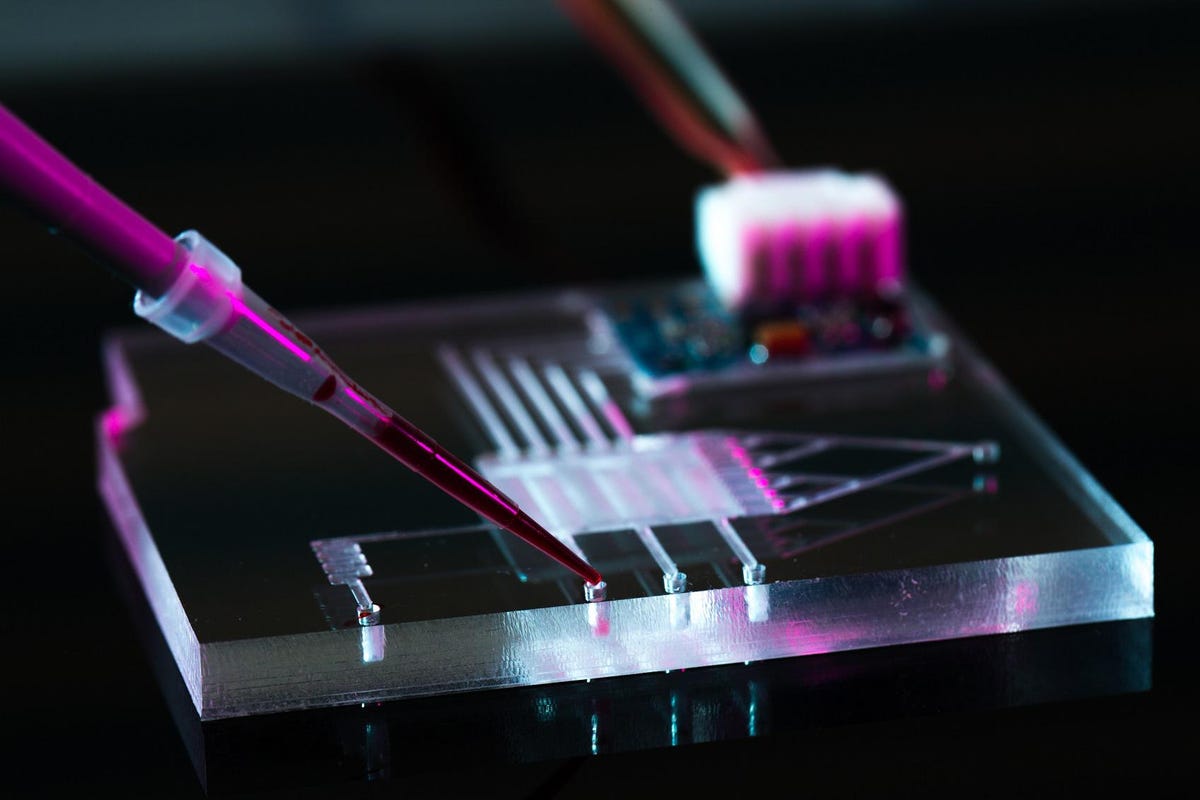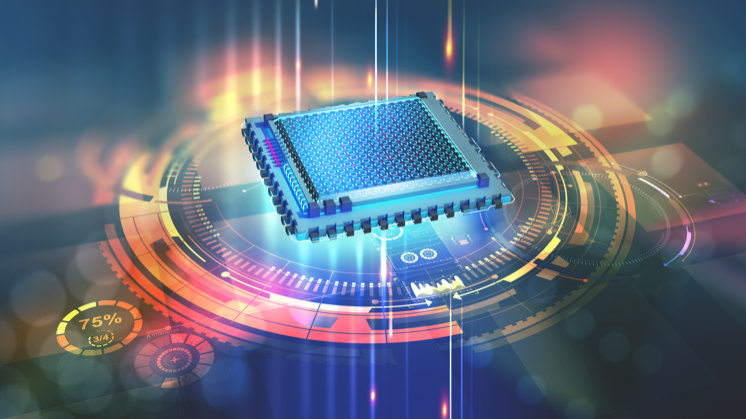Technologies of the Future
The bipartisan CHIPS and Science Act of 2022 will counter China by strengthening American manufacturing and supply chains in efforts to secure the United States as a bold leader in the industries of tomorrow, including nanotechnology, clean energy, quantum computing, and artificial intelligence.
The CHIPS and Science Act will boost American semiconductor research, development, and production, ensuring U.S. leadership in the technology that forms the foundation of everything from automobiles to household appliances to defense systems. America invented the semiconductor, but today produces about 10 percent of the world’s supply—and none of the most advanced chips. Instead, we rely on East Asia for 75 percent of global production. The CHIPS and Science Act will unlock hundreds of billions more in private sector semiconductor investment across the country, including production essential to national defense and critical sectors.
Advancing U.S. Global Technology Leadership
The CHIPS and Science Act provides $52.7 billion for American semiconductor research, development, manufacturing, and workforce development. This includes $39 billion in manufacturing incentives, including $2 billion for the legacy chips used in automobiles and defense systems, $13.2 billion in R&D and workforce development, and $500 million to provide for international information communications technology security and semiconductor supply chain activities. It also provides a 25 percent investment tax credit for capital expenses for manufacturing of semiconductors and related equipment. These incentives will secure domestic supply, create tens of thousands of good-paying, union construction jobs and thousands more high-skilled manufacturing jobs, and catalyze hundreds of billions more in private investment.
Taiwan Semiconductor Major Beneficiary
Aside from the incentive provided by the CHIPS and Science Act, there are a few more reasons why investors might want to remain bullish on semiconductor stocks in 2023 and beyond. Taiwan Semiconductor (TSM) expects annual revenue growth of 15% to 20% in the coming years, which is double what it estimated earlier. To achieve that, it needs to make more chips to satisfy booming demand, and it needs to invest in equipment so that it can ramp up production. The big jump in the company’s planned spending to meet that need bodes well for Applied Materials (AMAT) and ASML Holding (ASML), which both supply semiconductor manufacturing equipment to Taiwan Semi.

Applied Materials, Inc. has announced its intention to make multi-billion-dollar investments in its innovation infrastructure in the United States and to expand its global manufacturing capacity between now and 2030. These investments will enhance customer collaboration to accelerate improvements in semiconductor performance, power and cost – and enable the company to increase equipment manufacturing capacity as the digital transformation of the economy creates the opportunity for a $1 trillion semiconductor market.
Applied Materials Could Be The Next Nanotech Stock To Blow Up
At the heart of these investments, the scale of which will be contingent upon receiving government support, Applied Materials plans to build a next-generation R&D center in Sunnyvale, California. This high-velocity innovation platform will be dedicated to advancing materials engineering, foundational semiconductor technologies and process equipment. The Silicon Valley center will play a central role in collaborative research and development with all the world’s major chipmakers, bolster university partnerships, and be capable of engaging with a future U.S. National Semiconductor Technology Center. Applied expects to make this investment with support from the U.S. government through provisions of the CHIPS and Science Act and the State of California through the Governor’s Office of Business and Economic Development (GO-Biz) California Competes Grant awarded earlier this year. An event to mark the launch of this investment is planned for early 2023 in Silicon Valley.
The Next Generation of eBeam Technology
Chipmakers use eBeam technology to identify and characterize defects that are too small to be seen with optical systems. Finding surface and buried defects is becoming increasingly challenging as chipmakers push the limits of 2D logic and DRAM scaling using EUV lithography and transition to complex 3D architectures like GAA logic transistors and 3D NAND memories. Recently, Applied Materials made a serious breakthrough in eBeam imaging resolution and speed that will enable chipmakers to accelerate chip development and make greater use of eBeam technology in high-volume manufacturing.
Applied Materials’ new “cold field emission” technology works at room temperature, increasing nanoscale image resolution by up to 50% and imaging speed by up to 10X CFE. EBeam technology enables leading chipmakers to accelerate development and commercialization of emerging 3D Gate-All-Around logic transistors and next-generation DRAM and NAND memory chips.

Additionally, Applied has on deck two new CFE eBeam products introduced – SEMVision® G10 for defect review and PrimeVision® 10 for defect inspection – extending Applied’s leadership in the eBeam process diagnostics and control market. The SEMVision product family is the most advanced and widely used eBeam review system in the world, enabling customers to image the smallest defects to understand the issues impacting chip process development and high-volume manufacturing. The new SEMVision G10 system uses CFE technology to achieve sub-nanometer image resolution and up to 3X faster imaging than the company’s previous best product. Applied’s SEMVision G10 system has been chosen by all GAA customers as the process development tool of record and has already generated more than $400 million in revenue. SEMVision G10 systems have also been deployed by leading memory customers for developing emerging DRAM and NAND process nodes and ensuring high-volume production of existing memory nodes.
PrimeVision 10 Defect Inspection System
The PrimeVision 10 system is a new addition to Applied’s eBeam product portfolio. The system features nanometer-scale resolution for detecting tiny defects on the surface of wafers, as well as 3D detection technology that finds yield-critical defects buried in 3D GAA structures and high-aspect-ratio memory devices. With its high eBeam density, the PrimeVision 10 system can generate high-resolution images up to 10X faster than TFE-based eBeam inspection systems.
Applied Materials has become the process control industry’s number-one supplier of eBeam systems, with eBeam market segment share of over 50 percent.
*content excerpts compliments of us.gov, Taiwan Semi, Applied Materials, and ASML Holdings- all information publicly available via their websites*

















